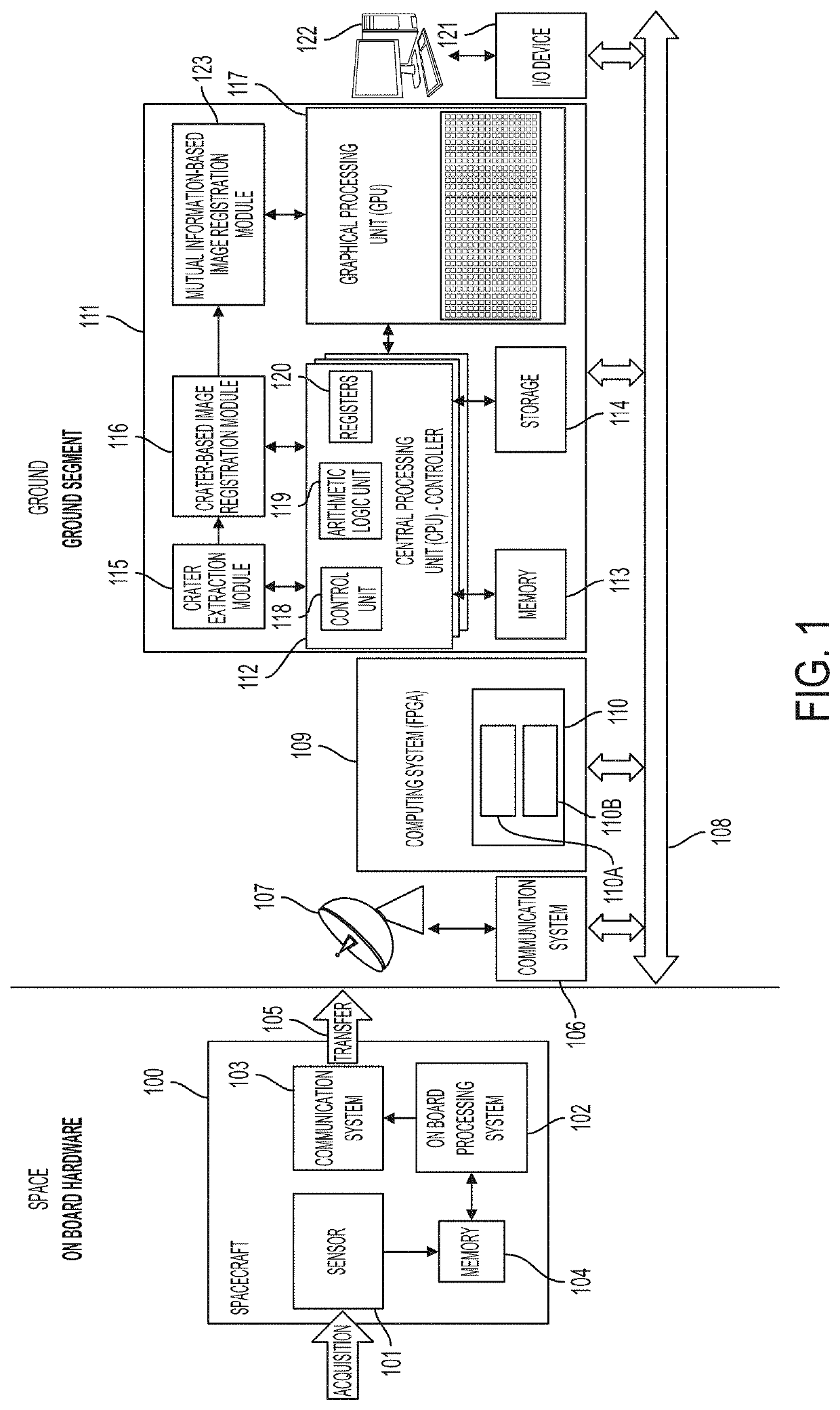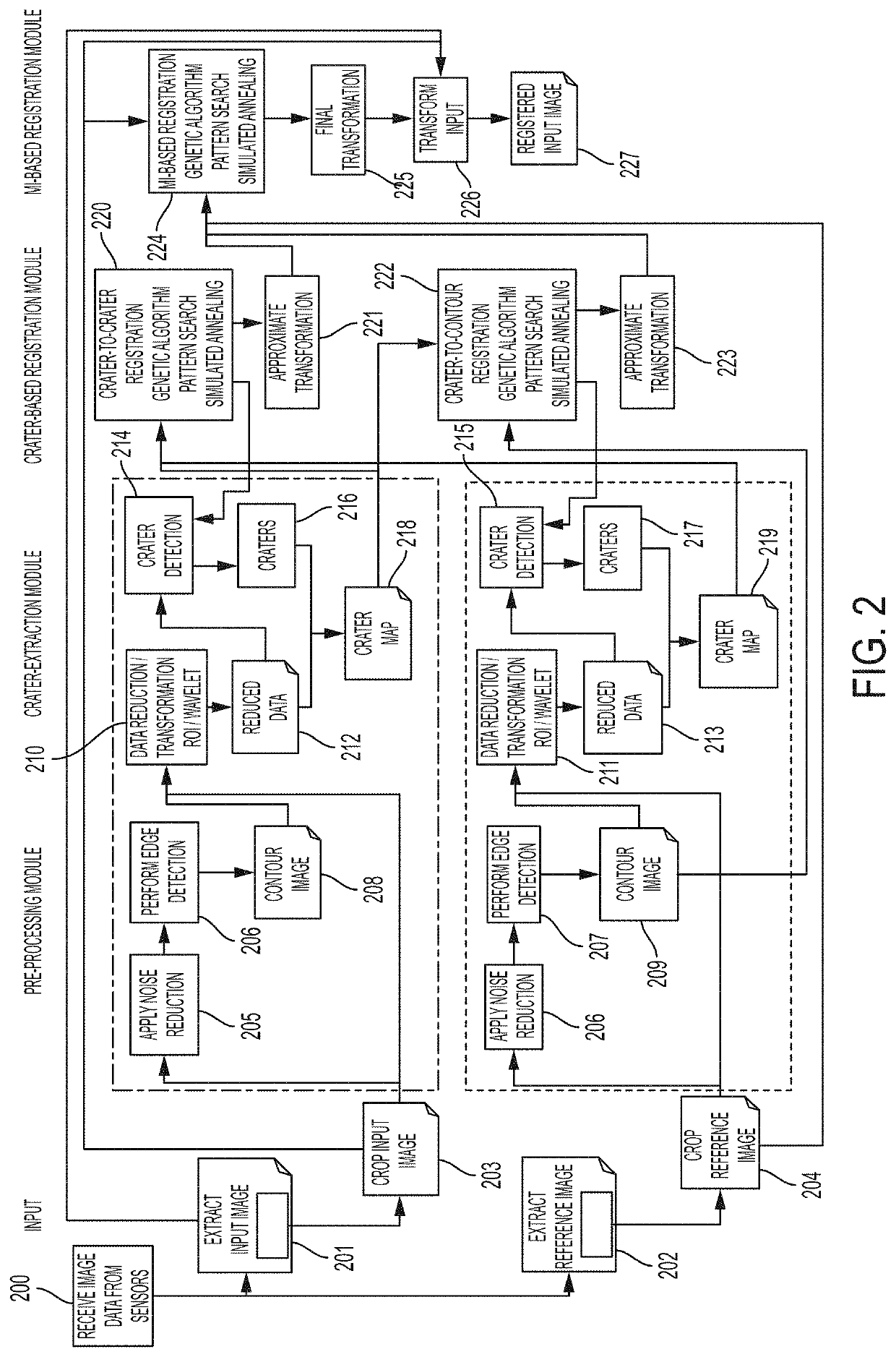System and method of crater detection and registration using marked point processes, multiple birth and death methods and region-based analysis
a crater detection and registration technology, applied in image analysis, image enhancement, instruments, etc., can solve the problems of manual operation, data heterogeneity, and the need for automatic image registration
- Summary
- Abstract
- Description
- Claims
- Application Information
AI Technical Summary
Benefits of technology
Problems solved by technology
Method used
Image
Examples
Embodiment Construction
[0066]The present invention relates to a novel system and method of semi-automatic registration of planetary images using a novel two-stage approach: first, craters are detected by using a marked point process (MPP) model optimized through either a birth-and-death or a birth-and-cut sampling process; then second, image registration is accomplished by matching the extracted craters through the optimization of distance and by refining the obtained partial result through the optimization of an information-theoretic function.
[0067]The present invention jointly addresses the problems of semi-automatic registration of pairs of planetary images collected by a passive sensor, and of detection of the craters in the imaged scene. These two goals are interconnected, because contour features (the outlines of the craters) are of primary importance for registration.
[0068]Space and Ground Systems Overview
[0069]In one embodiment, the present invention includes a spacecraft 100 (see FIG. 1) having t...
PUM
 Login to View More
Login to View More Abstract
Description
Claims
Application Information
 Login to View More
Login to View More - R&D
- Intellectual Property
- Life Sciences
- Materials
- Tech Scout
- Unparalleled Data Quality
- Higher Quality Content
- 60% Fewer Hallucinations
Browse by: Latest US Patents, China's latest patents, Technical Efficacy Thesaurus, Application Domain, Technology Topic, Popular Technical Reports.
© 2025 PatSnap. All rights reserved.Legal|Privacy policy|Modern Slavery Act Transparency Statement|Sitemap|About US| Contact US: help@patsnap.com



